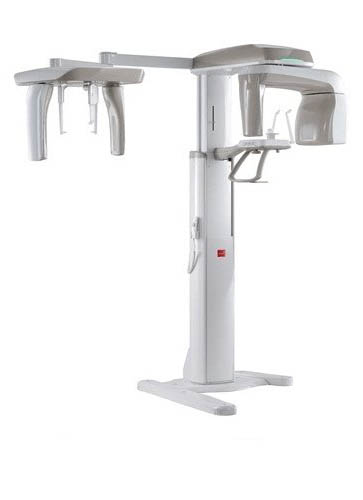 What is OPG X-ray?
What is OPG X-ray?
An OPG or orthopantomogram is a panoramic or wide view x-ray of the lower face, which shows all the teeth and supporting structures of the upper and lower jaw on a single film. The doctor can see the number, position and growth of all the teeth even those that have not yet erupted. It is very different from the small x-rays that dentists take of individual teeth. An OPG can also reveal issues with the jawbones and the joint which connects the mandible to the head; the Temporomandibular joint or TMJ. Your dentist may advise for an OPG for the planning of orthodontic treatment, for evaluation of wisdom teeth or for a general overview of the entire dentition and the bone which supports the teeth.
How is OPG taken?
The patient is asked to remove jewellery, eyeglasses, belt or any other metal objects that may disturb the images. The patient is made to stand with their face resting on a small shelf and asked to bite gently on a mouthpiece to stabilise the head. It is important to stay still while the x-ray is taken.
In which conditions, an OPG is recommended by the dentist?
There are multiple conditions in which an OPG radiograph may be recommended by your dentist, like:
- General evaluation of entire dentition and oral health
- Fracture of tooth or jaw
- Sinusitis, Periodontitis or Periapical abscesses
- Growth/ Tumor or cyst
- Assessment of temporomandibular joint for disease, fracture or dislocation
- Evaluation of facial bone diseases
- Foreign body localization
- Identification of stones in salivary glands (sialolithiasis)
- Monitoring of pediatric dentition for the location, shape and angle of teeth
- Identification of supernumerary teeth and absence of tooth germ to prepare for future aesthetic issues
- Initial and continuous evaluation of orthodontic treatment

What equipment is used during an OPG X-ray?
A specialised x-ray machine is used to take the OPG. During an OPG procedure, part of the equipment rotates around the patient’s head while they remain in a standing or sitting position.
What are the advantages of an OPG?
The main advantages of panoramic images/OPGs are:
- Wide coverage of teeth and facial bones including the TMJ (Temporomandibular joint)
- Quick and efficient procedure
- Ease of examination
- Low radiation dose
- Can be used for patients who have restricted mouth opening
- Useful aid for patient education and case presentation
What are some common uses of an OPG X-ray?
An OPG x-ray is commonly recommended by dental professionals in everyday practice and is an important diagnostic tool. It covers a wider area than a conventional intraoral x-ray due to which it provides valuable information about the tooth positioning and other bone abnormalities. Dental OPG is widely used in planning full and partial dentures, orthodontic treatment, extractions and implants.
An OPG x-ray can reveal dental and medical problems such as:
- Cysts/ growth in the jawbones
- Bone loss/ advanced periodontal disease
- Oral cancer
- Impacted teeth including wisdom teeth
- Disorders of temporomandibular joint
